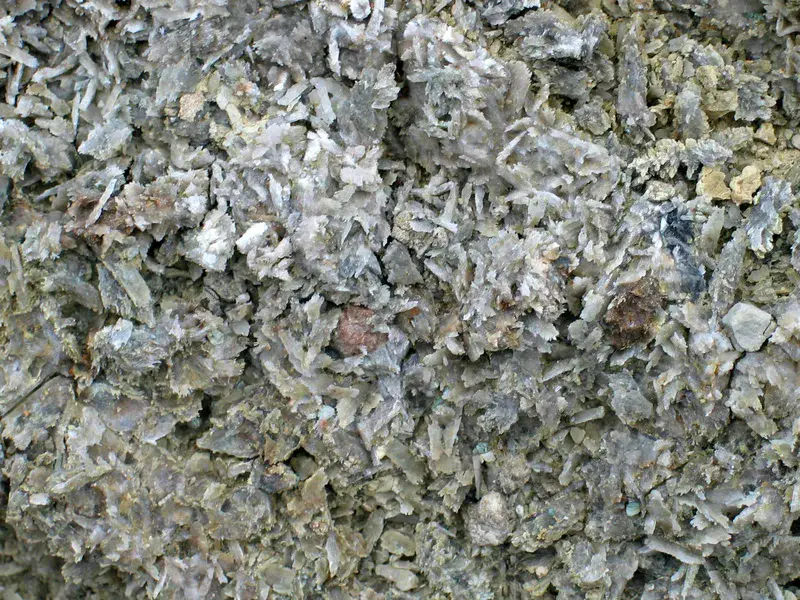
Gypsum concretions in a soil horizon
by Antonio Jordán, University of Seville, Sevilla, Spain
Haplic Gypsisol near Chiclana de la Frontera (Cádiz, SW Spain).
Most Gypsisols are formed when gypsum (calcium sulfate) from gypsiferous parent materials is dissolved and moves through soil water, precipitating in an accumulation soil horizons.
Triassic rock outcrops in almost all Andalusia consist mainly of red and variegated clays and in some cases by clays of different colors are known as the iridescent clays of the Triassic, or as variegated clays. Gypsum appears as chemical precipitation rocks formed by the accumulation of crystals of calcium sulfate which precipitated in lakes, lagoons, ponds or in the coastal plain. These sediments are the consequence of important arid conditions, since these salts require high concentrations to precipitate.
In arid areas or during the dry hot season of some climates, soil moisture moves up through capilars, a gypsic or petrogypsic horizon may be formed relatively near the surface. In arid regions with hot and dry summers, gypsum is dehydrated into a hemihydrate powder, which returns again to gypsum crystals during winter. Often, highly irregular gypsum crystals form thick compact crusts on the surface. Gypsum precipitates as fine crystals, white, powder in old root channels (gypsum pseudomycelia) or pockets, sand-sized crystals or strongly cemented petrogypsic horizons.
Categories
Location
- Europe (3893)
- Southern Europe (1691)
- Spain (819)
- Exact location (-6.0253 W, 36.4348 N)
Tags
Colours
Image properties
1514 × 1136 px;
image/jpeg; 696.1 KB
Camera:
Canon PowerShot G3
Taken on 18
February
2003
Submitted on 14 July 2014
Licence
Creative Commons Attribution-NonCommercial-ShareAlike 3.0 Unported (CC BY-NC-SA 3.0)
Credit
Antonio Jordán (distributed via imaggeo.egu.eu)
Share
Appreciate
Report